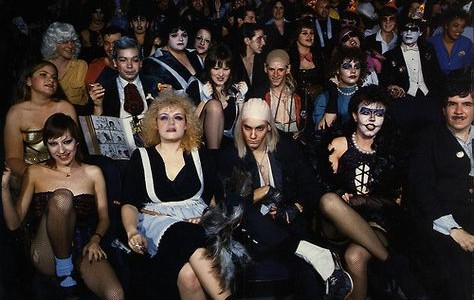Happy November, my lovelies! Did you have a nice Halloween? Did you go out and party or stay in and watch scary movies? Anyways, on with the articles….
On the 27th, Chris Flackett talked about how mysteries gave the early seasons of LOST their strength, over at 25 Years Later:
“What really appealed to me about those first three seasons was the deliciously slow build, but more importantly, it was the mystery of the show—not only what The Island is, but what the crash survivors found there and how. There was an inclusion of the audience into the cast that made us complicit in making discoveries about The Island alongside the characters, which was truly invigorating. As we discovered more and more strange things about The Island, the sense of mystery only deepened, like a hidden pool of warm moonlit water for us to luxuriate in. I hadn’t experienced this with a TV show since Twin Peaks. Like a good hit, I wanted it to last. To paraphrase Meatloaf, three out of six seasons ain’t bad, and I know I’m probably in the minority in feeling this way about Lost. But what it gained in complexity it lost in its seductive mystery, and I don’t think it was worth it ultimately.”
On the 29th, Mike Vanderbilt of The Daily Grindhouse, celebrated the inclusive nature of Rocky Horror:
“The cult of ROCKY HORROR has arguably outshined the film itself and has provided the blueprint for “cult cinema” to this day. Initially, a flop upon its release in the late summer of 1975, 20th Century Fox attempted screening the film at college towns before looking to the midnight circuit—which saw films like EL TOPO, PINK FLAMINGOS, and rep screenings of NIGHT OF THE LIVING DEAD become small successes—as a possible home for ROCKY. It was Tim Deegan that brought ROCKY HORROR to the Waverly Theatre in New York City’s Greenwich Village; New York City in the late ‘70s saw the rise of disco and punk rock and the Village, in particular, had been a favorite stomping ground for musicians and artists as well as ground zero for the gay liberation movement following the Stonewall riots of 1969. Deegan, an advertising executive at Fox, had been with ROCKY when record producer Lou Adler brought the project to Fox. This visionary young man convinced Fox to pony up some cash for publicity, and ROCKY HORROR had its midnight premiere on April 1st, 1976. The screening sold out and word got around. It wasn’t long before theater owners around the country began calling Fox looking to book ROCKY at their own theaters including St. Louis and Austin (Austin, has truly always been weird).”
Also on the 29th, Hannah Payne discussed how Lina Wertmüller’s career and honorary Oscar illustrate just how bleak things are for women directors, on Film School Rejects:
“Wertmüller’s honor represents what has and has not changed in Hollywood and the Academy Awards. Exactly why so few women have received nominations, let alone awards, for this category is complex, but the issue is not their supposed absence in the industry. Wertmüller’s decades-long career is proof alone that regardless of awards success, women directors are far from a novelty or recent phenomenon and have been a key and an active part of the film world since its inception.”
Finally, on the 30th, Bilge Ebiri of Vulture, talked about how prophetic The Insider turned out to be:
“Maybe that’s why The Insider still feels not only relevant, but downright prophetic. Mann’s film captures a key moment in the decline of American journalism, a point when corporate values took precedence over revelations that were clearly in the public interest. But that phenomenon didn’t start with the Wigand case. ‘There’s a certain level of self-censorship and legal censorship that’s been going on for a long time, particularly on the broadcast side, because it’s an entertainment model,’ Bergman says. (He also notes that the Wigand case wasn’t even the first time that CBS pulled one of his 60 Minutes segments off the air for fear of lawsuits from powerful interests.)”
Enjoy!

